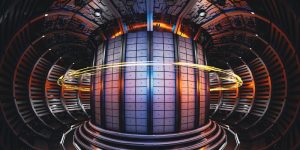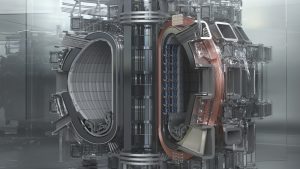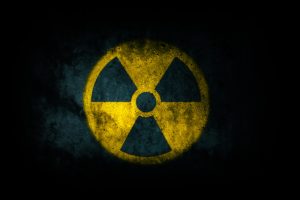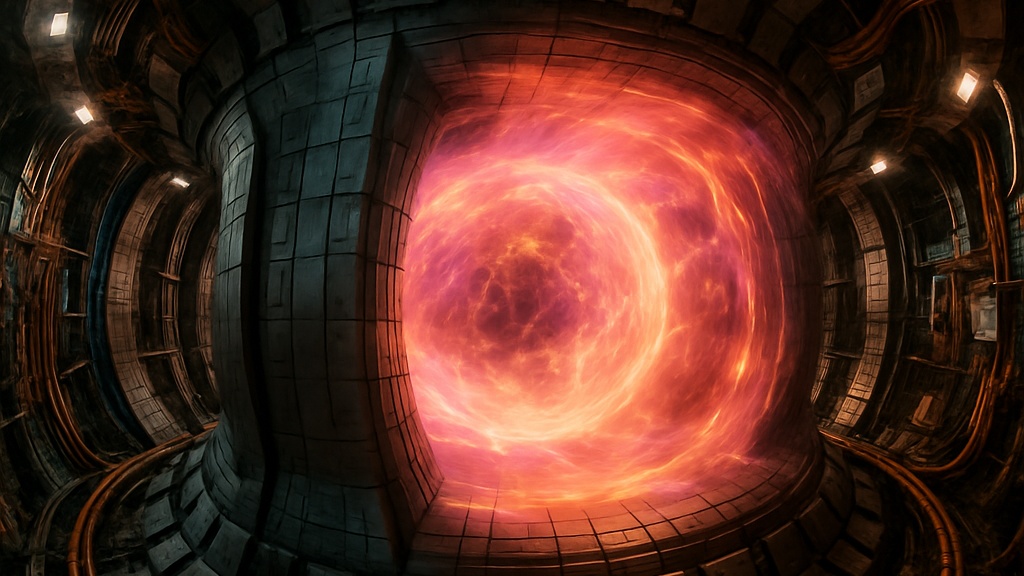Nuclear fusion – the process that powers the stars – has long captured the imagination of scientists, engineers, and energy experts alike.
Unlike nuclear fission, which involves splitting heavy atoms and results in radioactive waste and safety concerns, fusion joins light nuclei, such as hydrogen isotopes, to form heavier elements, releasing vast amounts of energy in the process.
With minimal radioactive waste, no carbon emissions, and virtually limitless fuel, fusion represents a potentially transformative source of clean energy.
As the world races to meet the dual challenges of climate change and growing energy demands, fusion energy is no longer a distant dream but a rapidly advancing field poised to reshape our energy landscape.
The historical journey of fusion energy
The story of fusion energy begins with our understanding of the stars. In the 1920s, British astrophysicist Arthur Eddington proposed that stars, including our Sun, derive their immense energy from the fusion of hydrogen into helium. This hypothesis was confirmed decades later when Hans Bethe published a groundbreaking paper in 1939 detailing the nuclear processes that fuel stars.
After World War II, the arms race and Cold War rivalry sparked significant investment in nuclear research, including fusion. Initially motivated by the potential for powerful thermonuclear weapons, researchers soon turned their attention to peaceful applications.
The Soviet Union developed a toroidal (doughnut-shaped) device called a tokamak in the 1950s. The tokamak, using magnetic fields to confine plasma, remains the most promising fusion concept to this day.
Significant progress was made in the decades that followed. In 1997, the Joint European Torus (JET) in the United Kingdom produced a record 16 megawatts of fusion power. More recently, in 2022, the United States’ National Ignition Facility (NIF) achieved a major milestone by producing more energy from a fusion reaction than was used to initiate it.
This historic ‘scientific breakeven’ moment marked the first time a fusion experiment yielded a net energy gain in the reaction itself, generating immense excitement and renewed global investment in fusion technology.
The science of fusion energy
At its core, nuclear fusion is the process of combining two light atomic nuclei into one heavier nucleus. This process releases energy because the mass of the resulting nucleus is slightly less than the sum of its parts. That lost mass is converted into energy, as described by Einstein’s equation, E=mc2.
The most promising reaction for practical energy generation on Earth involves deuterium and tritium, both isotopes of hydrogen. When these two nuclei fuse, they produce a helium nucleus and a high-energy neutron, releasing 17.6 million electron volts (MeV) of energy. Deuterium is readily available in seawater, while tritium, though rare, can be bred from lithium within the fusion reactor.

Achieving a self-sufficient tritium breeding cycle is a major engineering challenge, requiring sophisticated blanket systems that convert lithium into tritium using the emitted neutrons. Handling tritium safely is also complex due to its radioactivity and short half-life.
The energy released in fusion is primarily carried by neutrons. These high-energy particles transfer their energy to a surrounding blanket or coolant system, typically using materials like water or helium. The absorbed heat is then used to generate steam, which drives turbines connected to electrical generators – similar to how conventional thermal power plants operate.
Achieving fusion on Earth is extremely challenging. The hydrogen nuclei must be brought close enough together to overcome their natural electrostatic repulsion. This requires temperatures exceeding 100 million degrees Celsius – hotter than the core of the Sun.
At such temperatures, the hydrogen gas becomes plasma, a state of matter in which electrons are stripped from atoms. Containing this ultra-hot plasma is one of the key technological hurdles in fusion energy.
Fusion technologies and reactor designs
Several approaches have been developed to achieve and sustain fusion reactions. The most mature and widely studied is magnetic confinement fusion, particularly in tokamaks. These machines use powerful magnetic fields to confine plasma in a toroidal chamber, allowing the necessary conditions for fusion to be maintained long enough for energy to be extracted.
Another magnetic confinement concept is the stellarator, which twists the toroidal chamber into a helical shape. This design offers the advantage of steady-state operation without requiring an internal electric current to maintain plasma stability. Germany’s Wendelstein 7-X is currently the most advanced stellarator in operation.
In contrast to magnetic confinement, inertial confinement fusion (ICF) uses lasers or ion beams to compress tiny fuel pellets, achieving the high temperatures and pressures needed for fusion in extremely short bursts. The National Ignition Facility uses this method and was the site of the landmark breakeven experiment in 2022.

More recently, a surge of interest in alternative and hybrid fusion approaches has emerged, driven in part by private-sector investment. Companies such as Commonwealth Fusion Systems, Helion Energy, and TAE Technologies are exploring compact fusion devices, magnetised target fusion, and field-reversed configurations. These methods aim to simplify reactor design, reduce costs, and accelerate timelines to commercialisation.
A critical technological barrier across all reactor designs is the development of materials that can withstand the extreme conditions inside a fusion reactor. These include intense heat, high neutron fluxes, and strong electromagnetic fields. Current research focuses on advanced alloys, tungsten-based materials, and silicon carbide composites to ensure long-term durability and safety. These materials must also maintain their structural integrity while minimising activation from neutron bombardment, reducing long-term waste management challenges.
Flagship projects leading the charge
Among the most significant international collaborations is ITER, a multi-billion-euro facility in France supported by 35 nations. When operational, ITER will be the first fusion experiment to achieve net energy gain on a large scale. Though delayed and over budget, its success would represent a giant leap forward in demonstrating the feasibility of fusion power. ITER is designed to produce 500 megawatts of fusion power from 50 megawatts of input heating power, aiming for a tenfold energy gain (Q=10). However, it is important to note that ITER will not generate electricity; its role is to prove that sustained fusion reactions can be achieved with a net energy gain at the reaction level.
JET, the UK’s flagship tokamak, continues to provide valuable data for ITER and future reactors. In recent years, JET has tested ITER’s planned fuel mix and achieved record energy outputs, confirming the theoretical underpinnings of ITER’s design. As one of the longest-running fusion devices, JET remains a cornerstone of international fusion science and recently completed its final deuterium-tritium experiments.

The National Ignition Facility in California has become the standard-bearer for inertial confinement fusion. Its 2022 success marked a pivotal moment for the field, proving that net energy gain is not just a theoretical concept. NIF uses 192 powerful lasers to deliver more than 2 megajoules of energy onto a tiny fuel pellet, initiating fusion. While this represents scientific breakeven (Q > 1 for the fuel), it does not account for the total system energy (Q_plant), which remains far below unity due to the energy-intensive nature of the laser systems.
China’s EAST (Experimental Advanced Superconducting Tokamak) continues to set records for plasma temperature and confinement, reaching 160 million degrees Celsius for extended periods. This work feeds directly into China’s long-term goal of building a demonstration fusion plant within the next two decades. The China Fusion Engineering Test Reactor (CFETR) is under development to serve as a prototype power plant, with electricity generation planned for the 2040s.
South Korea’s KSTAR tokamak has achieved impressive milestones, including maintaining plasma at over 100 million degrees for 30 seconds. This research contributes to the global understanding of stable, sustained fusion conditions. KSTAR’s innovations in superconducting magnet technology are also being applied in international projects.
Germany’s Wendelstein 7-X stellarator offers critical insights into alternative magnetic confinement strategies. In 2023, it achieved longer plasma durations and improved energy retention, suggesting stellarators could be a viable path to continuous fusion power. The project is testing design features for future reactors that require minimal external energy to maintain plasma stability.
In the private sector, Commonwealth Fusion Systems is developing SPARC, a compact, high-field tokamak designed to demonstrate net energy gain by the late 2020s. Its successor, ARC, aims to produce electricity for the grid in the 2030s. Helion Energy is building a fusion generator using pulsed magnetic fields and anticipates commercial operation by 2030.
TAE Technologies is pioneering a field-reversed configuration approach that aims to produce fusion with non-radioactive fuels like hydrogen-boron, potentially offering even cleaner outcomes. In 2023, Helion signed an agreement with Microsoft to supply fusion electricity by 2028, a bold goal that underscores growing commercial interest.
Other notable ventures include General Fusion in Canada, which is developing magnetised target fusion technology using a liquid metal liner, and First Light Fusion in the UK, which uses projectile impact rather than lasers to achieve fusion conditions. These diverse efforts reflect the increasing dynamism and entrepreneurial spirit in the fusion ecosystem. Startups like Zap Energy, Focused Energy, and Kyoto Fusioneering are adding to the momentum by targeting innovative designs, materials, and integrated systems.
Together, these public and private projects represent humanity’s most ambitious attempt yet to tame the energy of the stars. Each success builds momentum toward the goal of making fusion not just possible – but practical, sustainable, and accessible.
Economic viability and commercialisation challenges
While fusion holds tremendous potential, realising it as a commercially viable energy source requires overcoming immense economic challenges. Fusion reactors are capital-intensive to build and operate. For example, ITER’s projected costs have surpassed €20bn, and future commercial-scale reactors may require similar or greater investment.
One critical measure of economic viability is the Levelised Cost of Electricity (LCOE), which reflects the total cost of building, operating, and decommissioning a plant over its lifetime, divided by the electricity it produces.
Current estimates for future fusion LCOE range widely – from competitive with nuclear fission or renewables to significantly higher – depending on the design and deployment scale. Reducing construction complexity, improving materials longevity, and developing compact, modular reactors are essential to bringing costs down to competitive levels.
Private companies are betting that smaller, faster, and more efficient designs can achieve grid-competitive LCOE sooner. Government support, public-private partnerships, and clear regulatory pathways will be key to accelerating commercialisation.
Waste management and environmental safety
Fusion’s environmental benefits are one of its strongest selling points. It produces no greenhouse gases during operation and avoids the long-lived radioactive waste associated with fission. However, fusion does generate radioactive waste in the form of activated reactor components, primarily due to neutron bombardment of structural materials.

This waste is generally low to intermediate in level and has much shorter half-lives than fission products. It requires shielding and safe disposal, but the volume and hazard level are orders of magnitude lower than in fission plants. Advances in materials science may further reduce activation, and some proposed designs aim for fully recyclable or replaceable components to simplify waste management.
Realistic timeline for fusion deployment
Despite recent breakthroughs, experts caution that widespread deployment of fusion energy will take time. The path from scientific demonstrations to commercial power includes multiple stages: experimental reactors (like ITER), demonstration plants (such as CFETR), prototype power plants, and finally, commercial-scale deployment.
Most experts foresee fusion contributing to the global energy mix in the 2040s or 2050s. This timeline could accelerate if private ventures succeed in their ambitious targets. However, developing regulatory frameworks, scaling up tritium production, training a fusion workforce, and integrating fusion with existing grids remain substantial hurdles.
Fusion may not solve the climate crisis on its own within the next two decades, but it has the potential to become a major clean energy pillar by mid-century – especially as other renewables mature and grid storage solutions advance.
Fusion’s outlook
Fusion energy represents one of humanity’s most daring scientific and engineering quests. From the earliest theories of stellar power to recent demonstrations of breakeven and sustained plasma, the journey has been long, complex, and awe-inspiring. With a growing constellation of public and private projects pushing the frontiers of physics, materials science, and reactor design, fusion is steadily moving from dream to reality.
The coming decades will determine whether fusion can fulfil its promise: a virtually limitless, clean, and safe energy source for the world. The progress being made today lays the foundation for a brighter, more sustainable energy future – powered by the very reactions that light up the stars.
Source link

